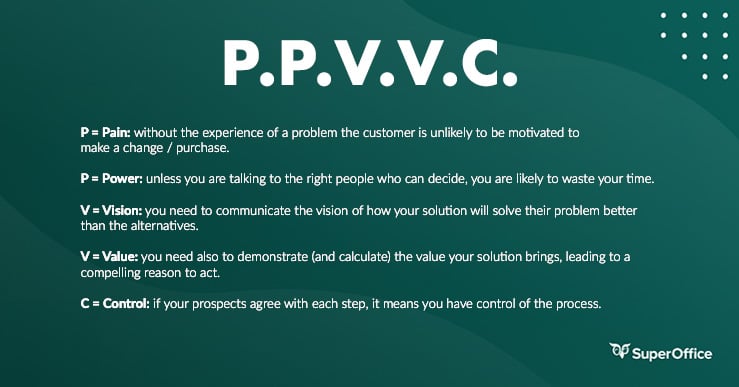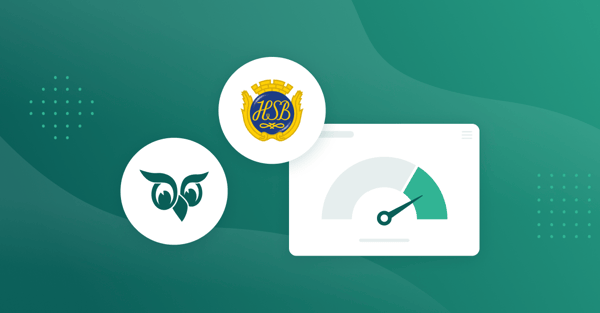As a business leader, you (hopefully) know the market you play in, what your ideal customer profile (ICP) looks like and how you are going to beat the competition.
But are you sure that everyone in your company also knows it?
Any company with a bigger go-to-market team knows that at some point you can no longer rely on salespeople just being “artists” and doing their own thing. There comes a time when you need to define, optimize and centralize your sales approach – to make sure you get the maximum effect out of your sales team and ensure that everyone is moving in the same direction.
For many growing companies, it becomes an exercise of documenting what they do when their sales force succeeds and then seeking to standardize and optimize their sales process based on what works – you need a sales playbook.
It all starts with analyzing what works
To create a sales playbook that helps your salesforce improve, you can’t rely on guessing what works.
You can’t guess whom your sales reps are talking to, or what their closing rates are, or how often customers and prospects are followed up, or what pipelines or forecasts look like. You need to know what leads to success!
You need to know exactly what characterizes the approach that allows you to win new customers. What works when it comes to upselling and cross-selling to existing customers? Where are you at your most competitive?
Most B2B companies collect this information through regular sales team meetings and update reports.
Sadly, there’s also a surprisingly high number of companies that don’t gather this data systematically due to the manual effort it may entail. However, this shouldn’t be the case. There are plenty of tools available today, which can help your sales team do this automatically and with a lot less time and hassle – a CRM solution being one of them.
Yet, collecting data is one thing, but don’t forget to analyze and map out your strengths and weaknesses and improve your best practices!
Let me put this into perspective.
Imagine if you had empirical evidence of all the sales you’ve won or lost over the last years. What would happen then?
- You would know what competitor you lost to or won against, as well as the reason behind that loss or win.
- You would have a clear idea of what specific vertical or geography you were especially successful in.
- You would know whether it ws specific individuals (sales reps) or the offering itself that secured the win?
As you can see, such analysis gives you a lot of hands-on information!
💡 Tip: It’s a good idea to send automated win/loss forms for the prospect or customer to fill out. I once worked with a salesperson who always put his “personality” as the reason for the win, and “price” as the reason for when he lost the sale.
Continue with putting yourself in your customers’ shoes
Armed with your new insights into what brings you sales success, you’re ready to (re)design your sales process and create your sales playbook.
This is where you, as a manager, need to get your hands dirty. A sales leader should be involved and care about the customer journey and how your company will be perceived by both prospects and customers.
In other words – you need to step into your potential customers’ shoes. This includes having opinions on the activities, sequence, best practices, forms, and templates that will influence the entire customer experience.
The ultimate goal of a sales playbook is to make everyone in the sales team play the same game!
You need to ensure everybody knows what to do and when. To do that, first create a common language with your sales team. Then, show your reps what to do at every sales stage by using the experience of your best performers. Finally, continually optimize and adjust your playbook as you go.
💡 Tip: Don’t forget that professional sales processes need system support in the form of a CRM solution.
Finalize by applying the PxPxVxVxC formula
There are many proven sales methodologies you can build on and outside training experts to lean on. But you need to find what works for you and then help everyone stay on top of it.
If I were to give a tip on how to maximize the probability of success in solution sales, I would give my vote to the well-known sales formula – PxPxVxVxC.

Each of these factors are parts of an equation that results in a successful sale.
Without all the elements in this formula, you’ll hardly achieve the result you want. It’s like multiplying a number by zero. The result is going to be zero.
If you haven’t found a pain to solve, if you try to sell to someone who can’t buy, if you’re not able to communicate a better tomorrow, or if you can’t quantify the value of that change – the chance of winning a sale is most likely equal to zero.
💡 Tip: Make sure that the qualitative steps outlined in the PxPxVxVxC formula are covered in your sales playbook.
If you can’t measure it, you can’t manage it
OK, so you’ve done your homework and figured out what works.
You’ve designed processes and outlined best practices for activities. Your templates are in place, and your people are ready to be trained.
A big part of creating (and activating) your playbook is to set clear goals and expectations for what needs to be done and what needs to be achieved. Sales remain a numbers game, so keeping an eye on key performance indicators cannot be underestimated.
Typical KPIs you’ll want to stay on top of (in addition to the actual sales forecast) may include:
- The number of new sales processes started (Are you building a sufficient pipeline?)
- The level of control in the sales process (Is the close plan approved by the customer?)
- The quantified value is calculated (Do you have a business case / ROI?)
- The average size of the deals in your pipeline (Do you work with the right prospects?)
- The average percentage of deals that you win (Is the win rate competitive?)
- The average lifetime of a deal before it’s closed (Is the sales velocity where it should be?)
These are insights that will help you determine if you are on track to reach your targets, as well as what has to be improved. Make sure that you measure both quality and quantity.
By linking your KPIs to your methodology (aka best practices) and the actual activities your salespeople do (or don’t do), you stand a much better chance of being proactive rather than reactive. Or, as we say in sales, “bad news early is good news.”
Concluding thoughts
To summarize, the beauty behind adopting a sales playbook lies in the fact that it will (a) make your salespeople more efficient and (b) eradicate the guessing game.
By implementing a sales playbook, companies can document and standardize their sales methodologies, providing a common language for discussing sales strategies.
More so, a good sales playbook serves as a guide for sales teams, ensuring everyone knows what to do and when. Also, it enables the organization to leverage the expertise of top performers to optimize sales processes.
Finally, by adopting a sales playbook and integrating your KPIs and the PxPxVxVxC formula, you have better chances of:
- streamlining your sales processes,
- improving your forecasting accuracy, and
- increasing your chances of closing deals effectively.
It reminds me of how the brilliant Peter Drucker once defined management: “the ability to convert effort into performance.”
I hope this input on the beauty and importance of a sales playbook can serve as an inspiration for your future sales victories.
P.S. 👉 If you want to learn more about how to win more customers, keep existing customers happy and loyal, as well as how to sell more to them, then download our FREE guide about how to thrive in tough economic times.




